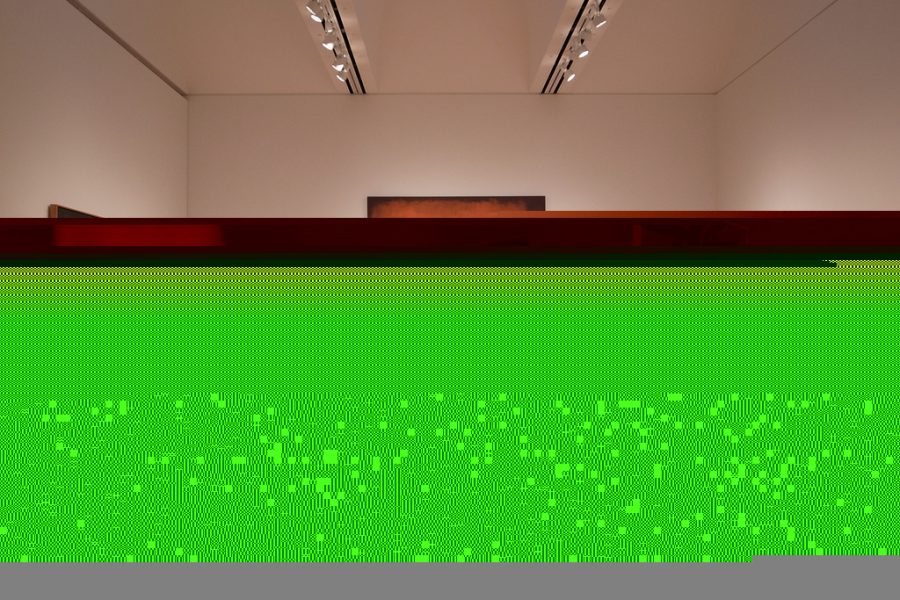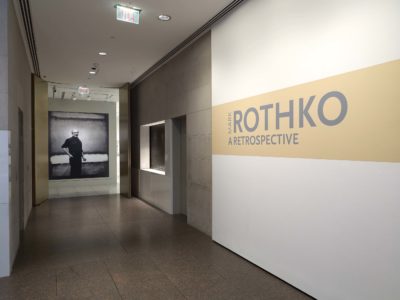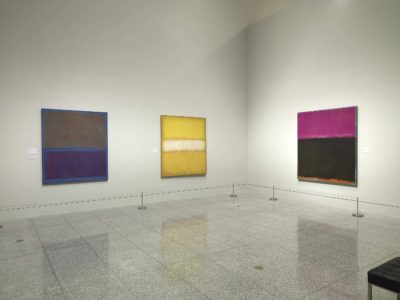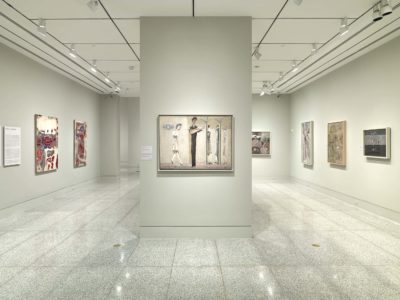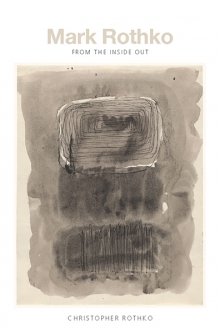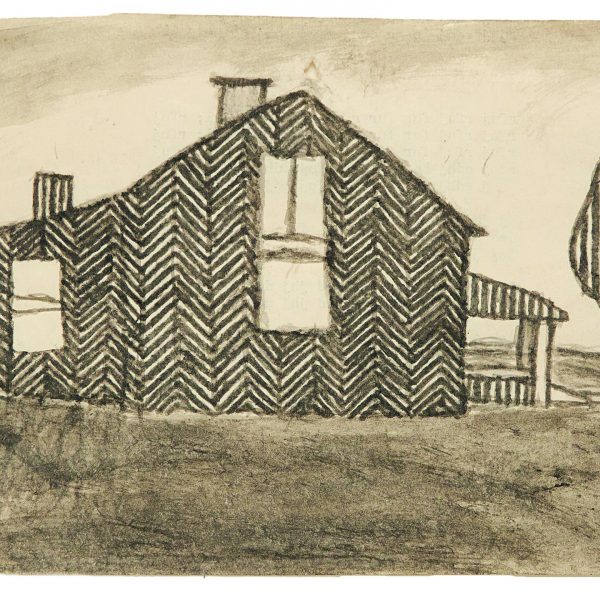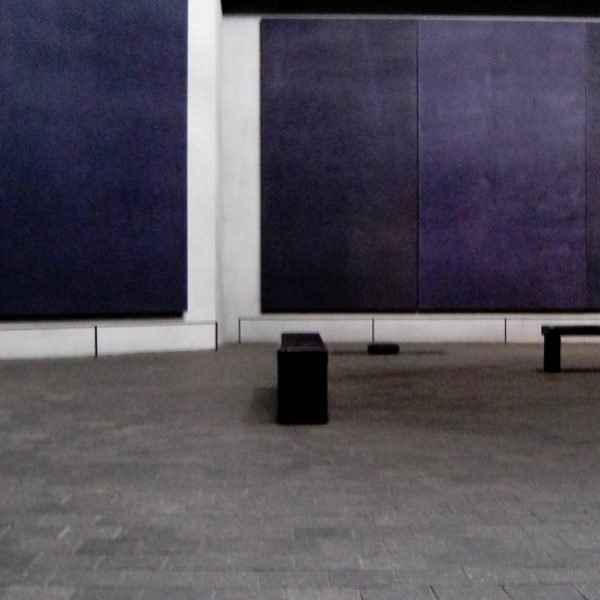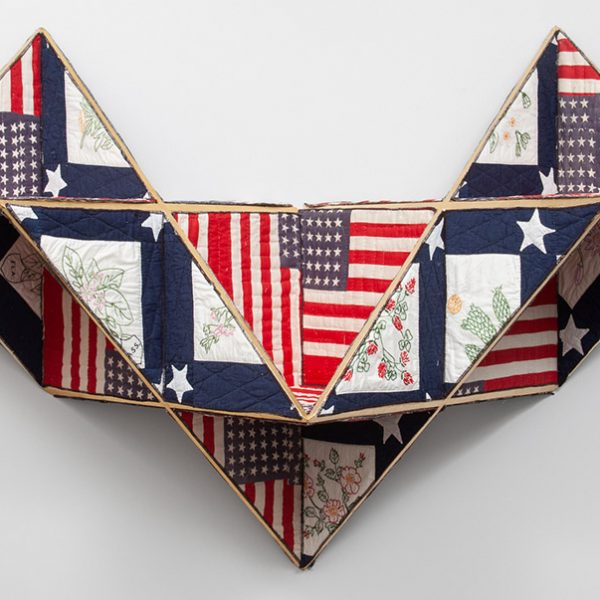Illuminating the Ethereal—Mark Rothko’s Work from His Son’s Point of View: Interview with Christopher Rothko by David Ebony
David Ebony—
Renowned for his incandescent abstract paintings of ethereal space and light, Mark Rothko is certainly one of the giants of twentieth century art. Along with fellow Abstract Expressionists Jackson Pollock and Willem de Kooning, Rothko made a monumental contribution to American post-war painting. Now occupying a rather mythic status, Rothko (1903-1970) is widely regarded as a troubled soul and a brilliant artist, whose work has been unfathomably influential around the world. Although his genius is unquestioned, his work is still often misunderstood today. For that reason, Christopher Rothko, the artist’s son, thought it necessary and timely to come forward publically with his own thoughts and observations about his father’s aims and achievements. He shares his musings in Mark Rothko: From the Inside Out, a book of essays written over the past twelve years that offers a new approach to his father’s work, as well as a number of insights into a unique father-son relationship (click here to read an excerpt from the book).
Christopher was just six years old at the time his father took his own life in 1970. Childhood memories of his dad are pleasant but limited, shielded as the boy was from many negative aspects of his father’s life—the pressures of celebrity, self-doubt about his work, his heart disease and the bouts of depression that ultimately consumed him. The significance of those conditions, the exalted position his father held in the art world, and as a public figure, were aspects of the patriarchal figure that Christopher learned later in life, largely from family lore, as well as from his own research, recent art history, and the press.
Born Markus Yakovlevich Rotkovich into a Jewish family in Russia (now Latvia), the future Mark Rothko immigrated with his family to the U.S. in 1913, settled at first in Portland, Oregon, and eventually made New York his home.
He struggled for many years, but managed to establish a firm reputation within the art world, and his work was widely collected and exhibited in his lifetime. The legend of Mark Rothko, however, grew tremendously in the years after his death, thanks to some very public explorations of his life and work, including several posthumous biographies, and a hit Broadway play, Red by John Logan, which won the Tony Award in 2010, not to mention the headline-grabbing prices his paintings often command (a 1961 Rothko painting, for instance, recently sold at auction for approximately $87 million).
Christopher Rothko’s interests and ambitions initially took him far from the art world. A clinical psychologist by profession, he set aside his own practice some twelve years ago to work with his sister, Kate Rothko Prizel, on preserving and promoting their father’s legacy. Today, he is focused primarily on maintaining the Rothko archives, assisting in research, and helping to develop and organize Rothko exhibitions around the world. He contributes regularly to scholarly publications, most recently the catalogue for “Mark Rothko: A Retrospective,” which was on view at the Museum Fine Arts, Houston from September 2015 until January 2016. Sought after as a lecturer, Christopher Rothko has by now established a reputation as an expert in his father’s work.
Installation photos from Mark Rothko: A Retrospective at the Museum of Fine Arts, Houston
Mark Rothko: From the Inside Out offers a number of correctives to prevailing attitudes toward the artist’s work, to help younger generations of scholars, and art enthusiasts—as well as veteran head-scratchers—to avoid some fundamental misunderstandings about Rothko’s art. The essays do not claim to be either art-historical documents or biographical studies, but in fact they encompass a bit of both. Historically resonant and factually sound, the essays are indeed full of “insider” information. While the text focuses primarily on the work, the personality of the artist comes through, perhaps inadvertently. “I chose to look at how Rothko paintings speak to us; how they get inside our mental and emotional world, and what they tell us about the psychological world of the artist,” the author states early on in the book. “I took my cues from the paintings themselves and what my father said about them, rather than theories of sensation and perception.”
I recently met with the author in a Tribeca coffee shop, where we discussed the book, and its personal and professional significance.
David Ebony: One of things that attracted me to your book, and that I commend you for, is that it is genre–defying. It is unusual as it may be regarded as a work of art criticism, yet it also deals with your personal feelings, your family and upbringing. You say in the book that you did not set out to produce a memoir, yet it has many autobiographical attributes. What was your aim for the book? How did it come about?
Christopher Rothko: The idea for the book grew from many years of working with my father’s paintings. As someone organizing Rothko shows, involved with hanging the paintings, lighting and installation, I noticed persistent questions about them from viewers. The works are now fifty, sixty, or seventy years old, but they still seem fresh, and they are still challenging for many people. I realized while working on these exhibitions that many viewers share similar difficulties in understanding the paintings, and still do not know how to approach them.
My background is in psychology; I was a clinical psychologist. Since I was not an art-world professional, I always had a sympathetic ear for viewers who put a lot of effort into trying to grasp challenging works of art, and want to understand. And as someone involved in the shows of my father’s work, I was inevitably obliged to respond to technical questions, such as, “How do the paintings actually work?” I would try to explain that, to begin with, you have to understand that a Rothko painting is not just visual, it is an experience. I wanted to see if I could address that idea in this book.
Ebony: What made you change careers to concentrate on your father’s art?
Rothko: In the 1990s, there was a series of major Rothko exhibitions, mostly organized by young curators. Working with my sister Kate, we were constantly dealing with rights and reproduction requests. I found myself fielding lots of questions. I enjoyed the exhibition process, and began to become actively involved in some of these shows, helping to hang the exhibitions, and I got involved with placement, lighting, etc. I was spending more and more time with the art. Eventually, I realized that I had become quite knowledgeable about the work. I stopped taking on new patients in my therapy practice in order to devote more time to my father’s work.
Ebony: Your book presents an unusual way of entry into your father’s painting than other studies I’ve seen; it’s a very personal perspective. But you were very young when your father died, so the ideas are not based on what he might have directly taught you firsthand. Do you remember ever seeing him paint?
Rothko: No one ever saw him paint! The book is a personal narrative, in that it is written in the first person. But I am addressing art-historical issues. The point is not about sharing my personal experiences with the work, but to help the viewer approach the work.
Ebony: How did you decide what your “voice” should be for this book? It must have been difficult. For instance, how did you decide when to refer to the subject as “my father,” and when to call him “Rothko,” which you use interchangeably, sometimes even within the same sentence.
Rothko: That’s a good question. I thought about it all the time while writing these essays. There was no easy solution. I tended to use “Rothko” when talking about his career, for instance, or what the impact of the work might be. But I used “my father” in more personal references.
Mark Rothko with No. 7, 1960, photograph attributed to Regina Bogat, reproduced courtesy of The Estate of Mark Rothko.
Ebony: What are some of the major misunderstandings about your father’s work? You mention in the book, for instance, that classic Rothko compositions are almost nothing, yet they are not voids, as some have suggested.
Rothko: He would not have spent years painting hundreds of rectangles if there was nothing there. His compositions are not nihilistic. That is a major misconception. His paintings are about a journey, if you will. To find meaning in them is a personal process. My father was not dictating where the viewer should go. He is not saying this composition means X, Y or Z. He created a space that touches us psychologically and intellectually.
Ebony: Another striking comment in the book is that the work is not about form or color, but about drama. Can you say more about that?
Rothko: Drama was his word. He loved theater. When he was very young, he worked in summer stock theater in Oregon. It’s funny that his understudy in one of those productions was Clark Gable, when he was just starting out. I don’t know if my father would have seriously pursued an acting career. He was interested in Greek drama and mythology throughout his life and, for him, the stories were always about what it means to be alive, what it means to be a human being.
His references to myth in his early work are certainly more obvious. But throughout his career, myth for him was a vehicle to examine the essences of things, existence, and fate. It was a language that could touch everyone. It related to the kind of shorthand he was aiming for in his painting that could be universally understood, that could capture the “feeling” of those myths.
Ebony: How do you write about “feeling” in painting? For me, it is a tricky thing, like walking a kind of tightrope.
Rothko: It is a tightrope. Very difficult to do because it is rather solipsistic. In writing about feeling in Rothko’s painting, it’s not about the artist conveying his feelings to the viewer, but rather something that is pre-conscious, creating a spark that awakens in viewers their own feelings. It is like music. You listen to a piece of instrumental music and it evokes all kinds of feelings, ones that are very different for each listener.
Ebony: In one of the essays you say that while your father’s compositions may be reductive, they differ from Minimalist paintings because the emphasis is on the human. I wondered if some Minimalists would disagree, and argue that their work’s emphasis also centers on the human.
Rothko: That was one of the first essays I wrote. Since then I’ve spent a lot time with Minimalist art and artists. I would revise those comments now to talk more about Rothko’s work being more “emotive” than that of most Minimalists.
Ebony: What are your thoughts about the play Red? I enjoyed it a lot, but was surprised to learn that your father didn’t have a studio assistant, which is key to the entire play.
Rothko: I think to add the assistant was necessary as a kind of foil. Otherwise, it would have been a two-hour monologue. The issues addressed in the play—my father’s conceptual, professional, and personal dilemma with the commission for the Seagram’s Building’s Four Seasons murals—were very well presented. The play is not just about an artist’s struggle, but about bigger questions beyond the world of art—struggles with the political, the commercial, and the philosophical conflicts in life.
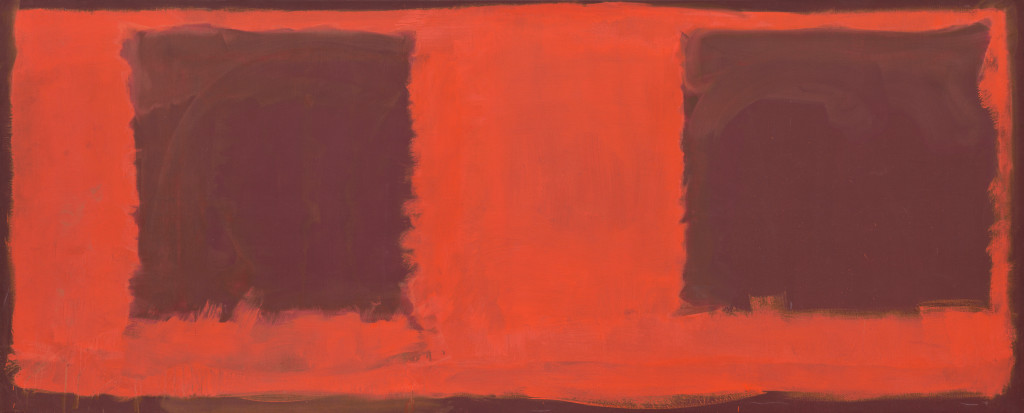
Mark Rothko, Untitled (Seagram Mural sketch), 1959, oil and mixed media on canvas, National Gallery of Art, Washington, Gift of The Mark Rothko Foundation, Inc. © 1998 by Kate Rothko Prizel and Christopher Rothko
Ebony: One of the unusual topics you address in the book is humor in Rothko. He seems to me to be one of the least humorous painters ever.
Rothko: That’s certainly true about the paintings, but if you read some of the statements he made, you’ll find he had a very lively, ironic sense of humor. But people miss irony. His first biographer, for example, mistook him for a deeply sexually frustrated and angry man because my father’s humor shot right past him. I know how to read it because it’s something I share with my father—it’s exactly my sense of humor. Initially, there were about thirty jokes in the book, but my editor advised me, wisely, I think, to take most of them out. That kind of humor doesn’t necessarily work on paper.
Ebony: You also go to great lengths to stress the importance of music for your father. His taste was very specific—Classical music, and especially Mozart. Mozart, Mozart and more Mozart.
Rothko: There was always music playing in our home. He gave me an amazing foundation in music from early on. I still play the records I listened to at age three! Music expressed exactly the type of deeply sensual, pre-verbal emotional experience that he wanted his paintings to awaken in his viewers.
Ebony: Can you talk about the late work, and your first visit to Rothko Chapel in Houston? It’s a moving part of the book. You had some trepidation on your first visit there.
Rothko: In 1996, when I was 33, I went to Houston for the twenty-fifth anniversary of the chapel. There was a fabulous exhibition at the same time devoted to the work related to the chapel that I still think was one of the best ever mounted. I was let into the chapel an hour before opening time. I was stunned. The silence in the room is deafening, and at first there seems to be nothing there. The enormous murals completely take over the walls, and because of the room’s octagonal shape, the paintings are all focused on you—you are at the epicenter. The installation makes you face some big questions—you have to ask yourself, what are you doing there. In fact, what are you doing in the world? At first it was quite overwhelming, but as the hour flowed by it became very moving. If you are alone in the room, and you are open to what the paintings suggest, it can be magical.
Ebony: What is most important to know about the late work of the late 1960s? You have a whole chapter on the dark, black and gray paintings that were prominent among your father’s last works.
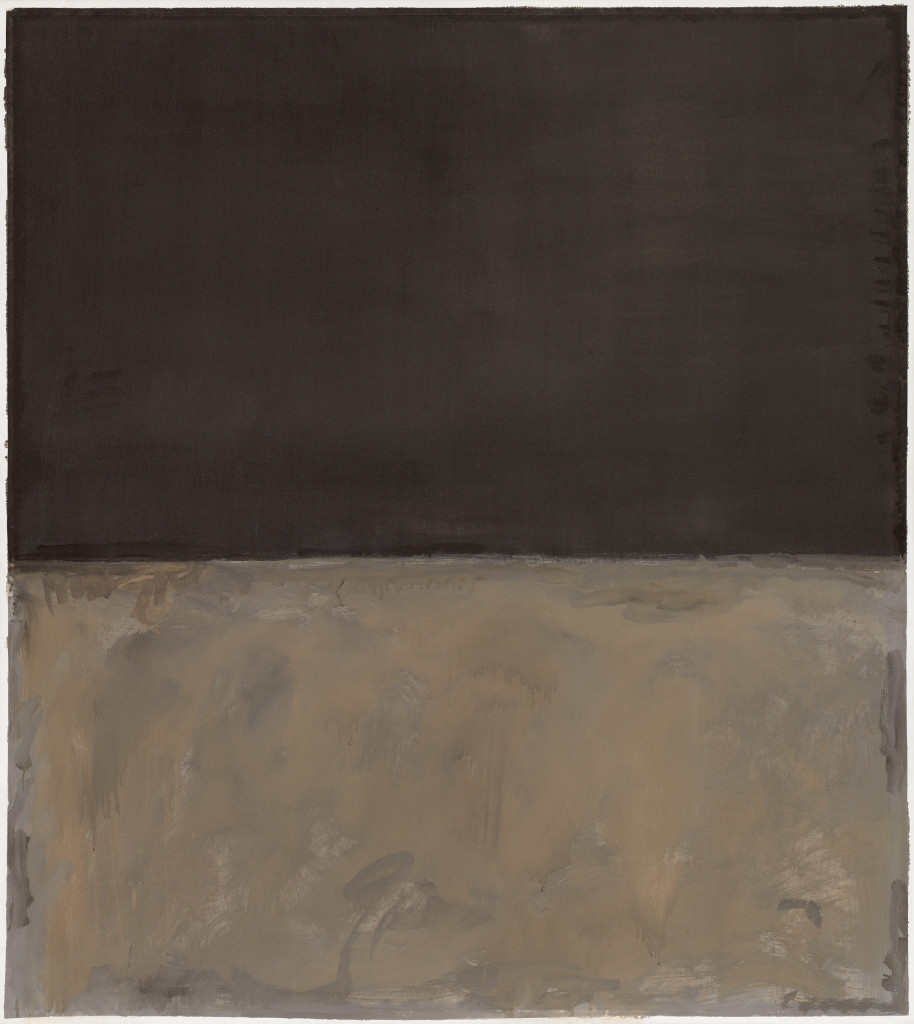
Mark Rothko, Untitled, 1969, acrylic on canvas, National Gallery of Art, Washington, Gift of The Mark Rothko Foundation, Inc. © 1998 by Kate Rothko Prizel and Christopher Rothko
Rothko: It’s most important to know that they are not dark. The black is soft, almost charcoal and the grays are quite varied. There are undercoats of blue, yellow, and pink that create colorfully gray surfaces. In one I discovered an undercoating of bright red. And the brushwork is very vigorous. He was very depressed at the time, and suicidal, but the works themselves are very active. They are not about depression, they are full of determined energy.
Ebony: In the book you say that you distrust journalists who ask too many questions about suicide, about your father’s suicide. So I’ve saved it for the very end. You devote some pages to it in the book, and readers will want to know your thoughts on the subject, so I have to ask.
Rothko: That essay was one I didn’t want to write, but knew I had to—its absence would have grabbed too much attention. The problem is that the suicide is the single most dramatic piece of my father’s story. Suicide fascinates us because it is so frightening. It is outside our experience, but the possibility of it is real and ever-present. People know about Rothko’s suicide and want to read his career backward—everything leads to the suicide. But that is not what moved my to father to paint. Even the last works, made when my father was ill and grappling with depression are full of life. To his last days he was engaged in rethinking the composition and the picture plane; they are very exciting works.
David Ebony is currently a Contributing Editor of Art in America magazine. Among his books are Arne Svenson: The Neighbors (2015); Anselm Reyle: Mystic Silver (2012); Carlo Maria Mariani in the 21st Century (2011); Emily Mason (2006); Botero: Abu Ghraib (2006); Craigie Horsfield: Relation (2005); and Graham Sutherland: A Retrospective (1998). He lives and works in New York City.























